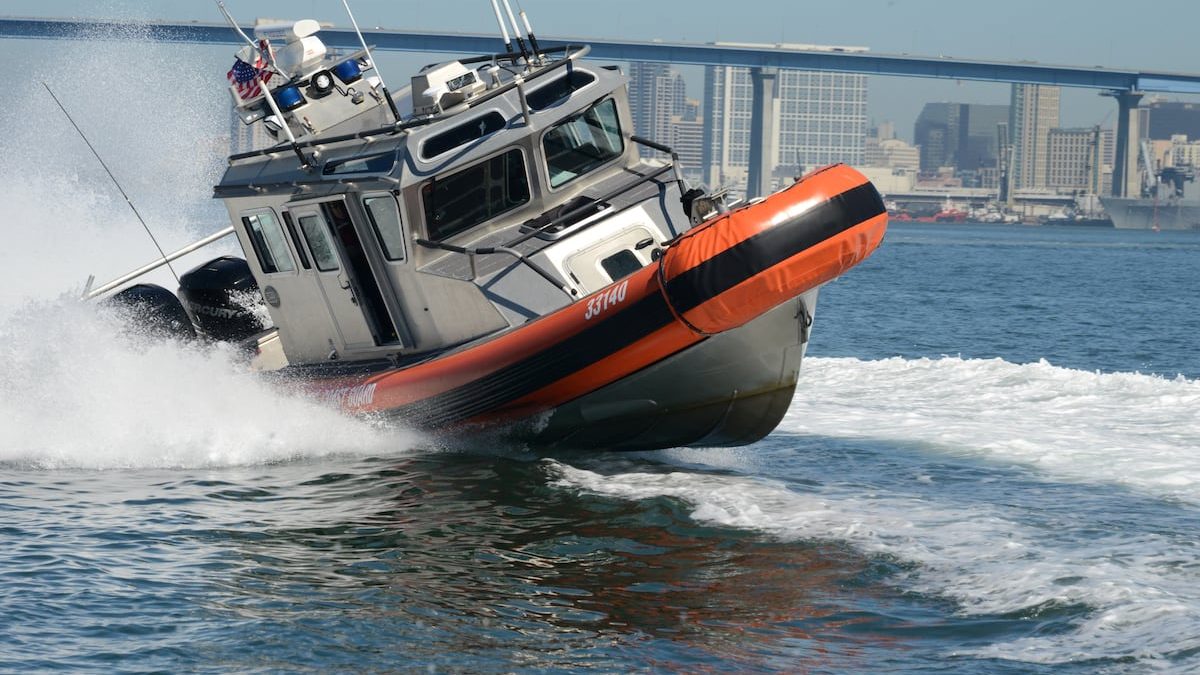A San Diego-based Coast Guard crew on May 10 stopped a vessel smuggling illegal migrants by firing four shots into the boat’s engine, putting an end to a dramatic chase.
Coast Guard watchstanders initially kept the 18-foot cabin vessel under surveillance after it was spotted speeding northbound off Point Loma around 5:50 p.m., according to a service release.
A Coast Guard response boat was dispatched to approach the vessel. However, as personnel attempted to establish contact, the boat accelerated in an attempt to evade.
Giving pursuit, the Coast Guard issued numerous verbal commands via radio and also fired warning shots. Crew members then fired disabling shots at the boat’s engine, as is customary procedure in such a sequence.
After boarding the vessel, Coast Guard personnel found a total of eight foreign nationals attempting to enter the country illegally, including five adult men, one adult woman and two young adults aged 16 and 17. The migrants were taken to Ballast Point, along with their vessel, and transferred to the custody of the Department of Homeland Security.
Although firing on a migrant vessel is less common, the standard measure when boats fail to obey verbal commands and subsequent warning shots is not without precedent. For example, in 2013, the Coast Guard shot out the engine of a go-fast boat smuggling illicit drugs after the vessel’s crew failed to respond to commands or warning shots.
The chase on May 10, meanwhile, was just one at least three human smuggling operations in the area that were halted by the Coast Guard the same day.
Two miles south of Point Loma, a Coast Guard cutter took three illegal migrants into custody from a 20-foot pleasure craft, the service announced. Another vessel carrying around 13 illegal migrants fled from the Coast Guard and beached near Windandsea Beach. Seven foreign nationals, including five adult males from Mexico and one adult female from Guatemala, were taken into custody. Six others evaded capture.
The Coast Guard Pacific Area notes that human smuggling is a money-making venture for organized crime groups, which charge migrants exorbitant sums to transport individuals illegally into the United States in unsafe conditions.
There has been a noticeable uptick of late in illegal activities, including drug smuggling and human trafficking, via maritime routes due to new barriers to overland smuggling routes into the U.S. via the southern border. The trend prompted the U.S. Navy to deploy warships with members of Coast Guard LEDET teams aboard.
Accordingly, the Coast Guard has seen a rise in high-profile interdiction missions. On April 23, the Coast Guard in San Diego offloaded over $214 million in illegal cocaine that had been seized from February through April. On May 9, the Coast Guard reported that a counter-drug patrol had seized $191 million in cocaine trafficked via maritime routes during an 84-day patrol in which they interdicted five smuggling vessels and arrested 18 suspects.
About Zita Ballinger Fletcher
Zita Ballinger Fletcher previously served as editor of Military History Quarterly and Vietnam magazines and as the historian of the U.S. Drug Enforcement Administration. She holds an M.A. with distinction in military history.
Read the full article here


